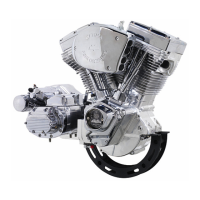Troubleshooting
Below you will find a list of common issues we have encountered with new engine installations. If you do not see your problem or cannot
resolve one of these problems please contact your dealer for more information.
Engine Won’t Start
Common causes: 1. No fuel supply. 2. No spark. 3. Engine has been flooded.
When trying to start the engine for the first time, and it is difficult, you need to verify that you have compression, fuel and spark. If you remove
the air filter cover and give the throttle 1-2 full turns prior to starting you can see if the fuel pump is working properly and that fuel is being
delivered. Please refer to the Carburetor manufacturers instruction on how to set the fuel pump. After you give the engine a few squirts from
the fuel pump, give it a full enrichment or choke for best initial starting and do this with the throttle closed. Do not keep twisting the throttle if
the engine does not start. Stop and evaluate the problem or you can Gas Foul the spark plugs. If no spark is present verify all connections and
contact the ignition manufacturer for technical help.
28
Excessive lifter noise
Common causes: 1. Engine was not properly primed prior to start-up. 2. No oil feed to lifters. 3. Improper pushrod adjustment.
4. Oil lines are not connected properly.
If you have excessive lifter noise at start-up shut the engine off immediately and go through the priming process described earlier in this
document. Ultima
®
engines are primed from the factory but if no oil is being fed from the oil pump the lifters will lose their prime quickly.
Engines that are run with dry lifters are at risk to bend pushrods and can have permanent damage. Always check the pressure when
diagnosing this with a quality pressure gauge reading from the oil-sending unit feed hole located behind the rear lifter block.
Refer to Figure 3 and 4, in the “Oil Line Routing” heading earlier in this booklet, or your oil tank’s manufacturer regarding oil line connections to your
tank if you are unsure. If you hook the oil lines up wrong you can damage the engine!! A good rule of thumb is the feed line is the lowest fitting in the
oil tank and will pick up oil from the bottom of the tank. The vent line is the highest fitting and oil should never be able to reach the line inside the
tank. The vent line has to be in airspace in the tank and never immersed in oil. The return line is also a fitting mounted high in the tank and can work
in or out of the oil in the tank but should also be in airspace.

